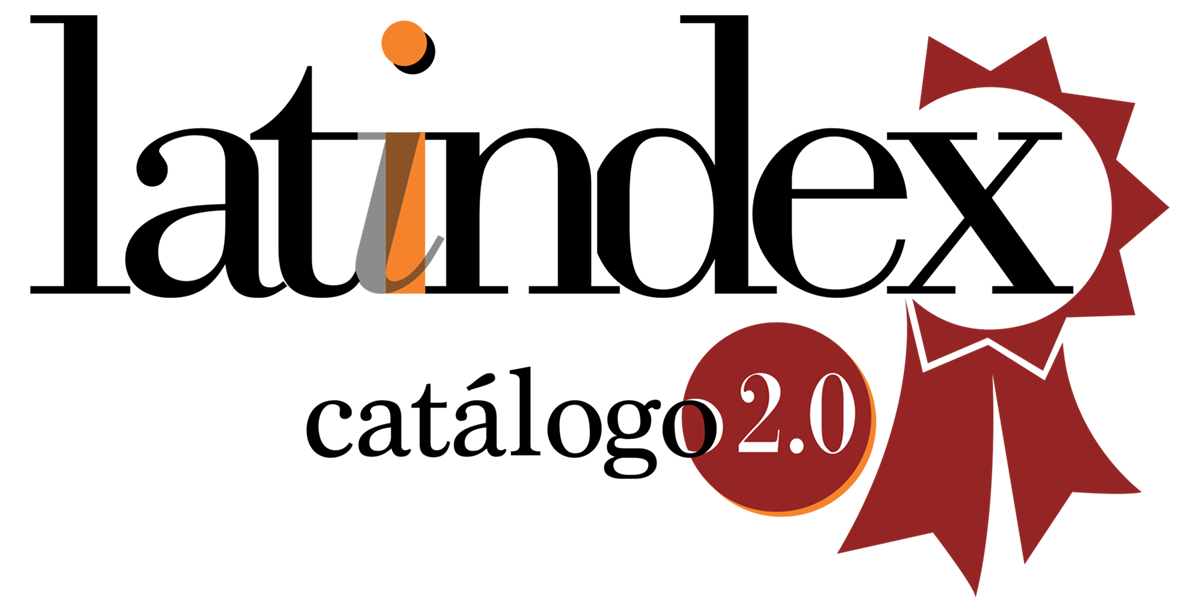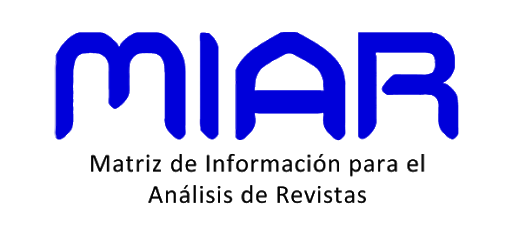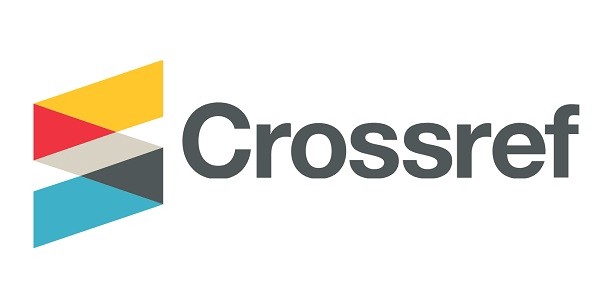Microambiente tumoral: influencia en el tratamiento del cáncer
DOI:
https://doi.org/10.35954/SM2025.44.1.3.e401Palabras clave:
Citocinas, Microambiente Tumoral, Neoplasias, Quimiocinas.Resumen
La presente revisión aborda el microambiente tumoral como un objetivo terapéutico en el tratamiento del cáncer.
Discutimos tanto su composición como su influencia en la progresión y resistencia tumoral; así como también distintas estrategias terapéuticas dirigidas a su modulación.
Comprender las intrincadas interacciones dentro del microambiente tumoral no solo es fundamental para entender la biología del cáncer, sino que también es clave para el futuro de las terapias oncológicas, ofreciendo una nueva esperanza en la lucha contra esta enfermedad devastadora.
Este artículo fue aprobado por el Comité Editorial.
Recibido para evaluación: diciembre 2024.
Aceptado para publicación: diciembre 2024.
Correspondencia: Facultad de Ciencias. Mataojo 2055, C.P. 11400. Montevideo, Uruguay. Tel.: (+598) 099472572.
E-mail de contacto: pcabral@cin.edu.uy
Descargas
Métricas
Citas
(1) Wang Q, Shao X, Zhang Y, Zhu M, Wang FXC, Mu J, et al. Role of tumor microenvironment in cancer progression and therapeutic strategy. Cancer Med 2023 May; 12(10):11149-11165. DOI: 10.1002/cam4.5698. PMID: 36807772; PMCID: PMC10242329. DOI: https://doi.org/10.1002/cam4.5698
(2) Xiao Y, Yu D. Tumor microenvironment as a therapeutic target in cancer. Pharmacol Ther 2021 May; 221:107753. DOI: 10.1016/j.pharmthera.2020.107753. PMID: 33259885; PMCID: PMC8084948. DOI: https://doi.org/10.1016/j.pharmthera.2020.107753
(3) Dzobo K, Senthebane DA, Dandara C. The tumor microenvironment in tumorigenesis and therapy resistance revisited. Cancers (Basel) 2023 Jan 6; 15(2):376. DOI: 10.3390/cancers15020376. PMID: 36672326; PMCID: PMC9856874. DOI: https://doi.org/10.3390/cancers15020376
(4) Baghban R, Roshangar L, Jahanban-Esfahlan R, Seidi K, Ebrahimi-Kalan A, Jaymand M, et al. Tumor microenvironment complexity and therapeutic implications at a glance. Cell Commun Signal 2020; 18(59). DOI: 10.1186/s12964-020-0530-4. DOI: https://doi.org/10.1186/s12964-020-0530-4
(5) Baghy K, Ladányi A, Reszegi A, Kovalszky I. Insights into the tumor microenvironment-components, functions and therapeutics. Int J Mol Sci 2023 Dec 15; 24(24):17536. DOI: 10.3390/ijms242417536. PMID: 38139365; PMCID: PMC10743805. DOI: https://doi.org/10.3390/ijms242417536
(6) de Visser KE, Joyce JA. The evolving tumor microenvironment: From cancer initiation to metastatic outgrowth. Cancer Cell 2023 Mar 13; 41(3):374-403. DOI: 10.1016/j.ccell.2023.02.016. PMID: 36917948. DOI: https://doi.org/10.1016/j.ccell.2023.02.016
(7) Lu C, Liu Y, Ali NM, Zhang B, Cui X. The role of innate immune cells in the tumor microenvironment and research progress in anti-tumor therapy. Front Immunol 2023 Jan 19; 13:1039260. DOI: 10.3389/fimmu.2022.1039260. PMID: 36741415; PMCID: PMC9893925. DOI: https://doi.org/10.3389/fimmu.2022.1039260
(8) Lei X, Lei Y, Li JK, Du WX, Li RG, Yang J, Li J, Li F, Tan HB. Immune cells within the tumor microenvironment: Biological functions and roles in cancer immunotherapy. Cancer Lett 2020 Feb 1; 470:126-133. DOI: 10.1016/j.canlet.2019.11.009. Epub 2019 Nov 12. PMID: 31730903.
(9) Pan Y, Yu Y, Wang X, Zhang T. Tumor-Associated Macrophages in Tumor Immunity. Front Immunol 2020 Dec 3; 11:583084. DOI: 10.3389/fimmu.2020.583084. Erratum in: Front Immunol 2021 Dec 10; 12:775758. DOI: 10.3389/fimmu.2021.775758. PMID: 33365025; PMCID: PMC7751482. DOI: https://doi.org/10.3389/fimmu.2021.775758
(10) Chaudhary B, Elkord E. Regulatory T cells in the tumor microenvironment and cancer progression: Role and therapeutic targeting. Vaccines (Basel) 2016 Aug 6; 4(3):28. DOI: 10.3390/vaccines4030028. PMID: 27509527; PMCID: PMC5041022. DOI: https://doi.org/10.3390/vaccines4030028
(11) Wright K, Ly T, Kriet M, Czirok A, Thomas SM. Cancer-associated fibroblasts: Master tumor microenvironment modifiers. Cancers (Basel) 2023 Mar 22; 15(6):1899. DOI: 10.3390/cancers15061899. PMID: 36980785; PMCID: PMC10047485. DOI: https://doi.org/10.3390/cancers15061899
(12) Erdogan B, Webb DJ. Cancer-associated fibroblasts modulate growth factor signaling and extracellular matrix remodeling to regulate tumor metastasis. Biochem Soc Trans 2017 Feb 8; 45(1):229-236. DOI: 10.1042/BST20160387. PMID: 28202677; PMCID: PMC5371349. DOI: https://doi.org/10.1042/BST20160387
(13) Zhao Z, Li T, Sun L, Yuan Y, Zhu Y. Potential mechanisms of cancer-associated fibroblasts in therapeutic resistance. Biomed Pharmacother 2023 Oct; 166:115425. DOI: 10.1016/j.biopha.2023.115425. Epub 2023 Sep 4. PMID: 37660643.
(14) Arima Y, Matsueda S, Saya H. Significance of cancer-associated fibroblasts in the interactions of cancer cells with the tumor microenvironment of heterogeneous tumor tissue. Cancers (Basel) 2023 Apr 28; 15(9):2536. DOI: 10.3390/cancers15092536. PMID: 37174001; PMCID: PMC10177529. DOI: https://doi.org/10.3390/cancers15092536
(15) Jiang X, Wang J, Deng X, Xiong F, Zhang S, Gong Z, et al. The role of microenvironment in tumor angiogenesis. J Exp Clin Cancer Res 2020 Sep 30; 39(1):204. DOI: 10.1186/s13046-020-01709-5. PMID: 32993787; PMCID: PMC7526376. DOI: https://doi.org/10.1186/s13046-020-01709-5
(16) Feng Y, Ye Z, Song F, He Y, Liu J. The role of TAMs in tumor microenvironment and new research progress. Stem Cells Int 2022 Aug 15; 2022:5775696. DOI: 10.1155/2022/5775696. Retraction in: Stem Cells Int 2024 Jan 24; 2024:9893249. DOI: 10.1155/2024/9893249. PMID: 36004381; PMCID: PMC9395242. DOI: https://doi.org/10.1155/2024/9893249
(17) He M, He Q, Cai X, Chen Z, Lao S, Deng H, et al. Role of lymphatic endothelial cells in the tumor microenvironment-a narrative review of recent advances. Transl Lung Cancer Res 2021 May; 10(5):2252-2277. DOI: 10.21037/tlcr-21-40. PMID: 34164274; PMCID: PMC8182726. DOI: https://doi.org/10.21037/tlcr-21-40
(18) Henke E, Nandigama R, Ergün S. Extracellular matrix in the tumor microenvironment and its impact on cancer therapy. Front Mol Biosci 2020 Jan 31; 6:160. DOI: 10.3389/fmolb.2019.00160. PMID: 32118030; PMCID: PMC7025524. DOI: https://doi.org/10.3389/fmolb.2019.00160
(19) Du W, Xia X, Hu F, Yu J. Extracellular matrix remodeling in the tumor immunity. Front Immunol 2024 Jan 25; 14:1340634. DOI: 10.3389/fimmu.2023.1340634. PMID: 38332915; PMCID: PMC10850336. DOI: https://doi.org/10.3389/fimmu.2023.1340634
(20) Tan Y, Wang M, Zhang Y, Ge S, Zhong F, Xia G, et al. Tumor-associated macrophages: A potential target for cancer therapy. Front Oncol 2021 Jun 10; 11:693517. DOI: 10.3389/fonc.2021.693517. PMID: 34178692; PMCID: PMC8222665. DOI: https://doi.org/10.3389/fonc.2021.693517
(21) Zhao Y, Xing C, Deng Y, Ye C, Peng H. HIF-1α signaling: Essential roles in tumorigenesis and implications in targeted therapies. Genes Dis 2023 Mar 30; 11(1):234-251. DOI: 10.1016/j.gendis.2023.02.039. PMID: 37588219; PMCID: PMC10425810. DOI: https://doi.org/10.1016/j.gendis.2023.02.039
(22) Prakash J, Shaked Y. The interplay between extracellular matrix remodeling and cancer therapeutics. Cancer Discov 2024 Aug 2; 14(8):1375-1388. DOI: 10.1158/2159-8290.CD-24-0002. PMID: 39091205; PMCID: PMC11294818. DOI: https://doi.org/10.1158/2159-8290.CD-24-0002
(23) Steinbichler TB, Dudás J, Skvortsov S, Ganswindt U, Riechelmann H, Skvortsova II. Therapy resistance mediated by exosomes. Mol Cancer 2019 Mar 30; 18(1):58. DOI: 10.1186/s12943-019-0970-x. PMID: 30925921; PMCID: PMC6441190. DOI: https://doi.org/10.1186/s12943-019-0970-x
(24) Bouleftour W, Rowinski E, Louati S, Sotton S, Wozny AS, Moreno-Acosta P, et al. A Review of the role of hypoxia in radioresistance in cancer therapy. Med Sci Monit 2021 Nov 3; 27:e934116. DOI: 10.12659/MSM.934116. PMID: 34728593; PMCID: PMC8573967. DOI: https://doi.org/10.12659/MSM.934116
(25) Mendoza EN, Ciriolo MR, Ciccarone F. Hypoxia-induced reactive oxygen species: Their role in cancer resistance and emerging therapies to overcome It. Antioxidants 2025; 14(94). DOI: 10.3390/antiox14010094 DOI: https://doi.org/10.3390/antiox14010094
(26) Pu Y, Ji Q. Tumor-associated macrophages regulate PD-1/PD-L1 immunosuppression. Front Immunol 2022 May 3; 13:874589. DOI: 10.3389/fimmu.2022.874589. PMID: 35592338; PMCID: PMC9110638. DOI: https://doi.org/10.3389/fimmu.2022.874589
(27) Sarkar T, Dhar S, Sa G. Tumor-infiltrating T-regulatory cells adapt to altered metabolism to promote tumor-immune escape. Curr Res Immunol 2021 Aug 28; 2:132-141. doi: 10.1016/j.crimmu.2021.08.002. PMID: 35492399; PMCID: PMC9040151. DOI: https://doi.org/10.1016/j.crimmu.2021.08.002
(28) Khan SU, Khan MU, Azhar Ud Din M, Khan IM, Khan MI, Bungau S, et al. Reprogramming tumor-associated macrophages as a unique approach to target tumor immunotherapy. Front Immunol 2023 Apr 17; 14:1166487. DOI: 10.3389/fimmu.2023.1166487. PMID: 37138860; PMCID: PMC10149956. DOI: https://doi.org/10.3389/fimmu.2023.1166487
(29) Zhao J, Chen J, Li C, Xiang H, Miao X. Hyaluronidase overcomes the extracellular matrix barrier to enhance local drug delivery. Eur J Pharm Biopharm 2024 Oct; 203:114474. DOI: 10.1016/j.ejpb.2024.114474. PMID: 39191305. DOI: https://doi.org/10.1016/j.ejpb.2024.114474
(30) Song Y, Fu Y, Xie Q, Zhu B, Wang J, Zhang B. Anti-angiogenic Agents in Combination With Immune Checkpoint Inhibitors: A Promising Strategy for Cancer Treatment. Front Immunol 2020 Aug 25; 11:1956. DOI: 10.3389/fimmu.2020.01956. PMID: 32983126; PMCID: PMC7477085. DOI: https://doi.org/10.3389/fimmu.2020.01956
(31) Tokizaki S, Podyma-Inoue KA, Matsumoto T, Takahashi K, Kobayashi M, Ibi H, et al. Inhibition of transforming growth factor-β signals suppresses tumor formation by regulation of tumor microenvironment networks. Cancer Sci 2024 Jan; 115(1):211-226. DOI: 10.1111/cas.16006. PMID: 37972575; PMCID: PMC10823284. DOI: https://doi.org/10.1111/cas.16006
(32) Siddiqui JA, Pothuraju R, Khan P, Sharma G, Muniyan S, Seshacharyulu P, et al. Pathophysiological role of growth differentiation factor 15 (GDF15) in obesity, cancer, and cachexia. Cytokine Growth Factor Rev 2022 Apr; 64:71-83. DOI: 10.1016/j.cytogfr.2021.11.002. Epub 2021 Nov 17. PMID: 34836750; PMCID: PMC8957514. DOI: https://doi.org/10.1016/j.cytogfr.2021.11.002
(33) Krzyszczyk P, Acevedo A, Davidoff EJ, Timmins LM, Marrero-Berrios I, Patel M, et al. The growing role of precision and personalized medicine for cancer treatment. Technology (Singap World Sci) 2018 Sep-Dec;6(3-4):79-100. DOI: 10.1142/S2339547818300020. Epub 2019 Jan 11. PMID: 30713991; PMCID: PMC6352312.
(34) Nema R. An omics-based tumor microenvironment approach and its prospects. Rep Pract Oncol Radiother 2024 Dec 4; 29(5):649-650. DOI: 10.5603/rpor.102823. PMID: 39759552; PMCID: PMC11698559. DOI: https://doi.org/10.5603/rpor.102823

Descargas
Publicado
Cómo citar
Número
Sección
Licencia
Derechos de autor 2025 : Pablo Cabral y Ximena Aida Camacho Damata.

Esta obra está bajo una licencia internacional Creative Commons Atribución-NoComercial-CompartirIgual 4.0.
Hasta 2024 utilizamos la licencia Creative Commons Atribución/Reconocimiento-NoComercial 4.0 Internacional https://creativecommons.org/licenses/by-nc/4.0/deed.es. La cual dice que: usted es libre compartir, copiar y redistribuir el material en cualquier medio o formato, también de adaptar, remezclar, transformar y construir a partir del material. Bajo los siguientes términos:
- Atribución: usted debe dar crédito de manera adecuada , brindar un enlace a la licencia, e indicar si se han realizado cambios . Puede hacerlo en cualquier forma razonable, pero no de forma tal que sugiera que usted o su uso tienen el apoyo de la licenciante.
- NoComercial: usted no puede hacer uso del material con propósitos comerciales .
A partir de 2025 los autores conservan sus derechos de autor y ceden a la revista el derecho de primera publicación de su obra, el cual estará simultáneamente sujeto a la licencia https://creativecommons.org/licenses/by-nc-sa/4.0/deed.es que permite compartir, copiar y redistribuir el material en cualquier medio o formato siempre que se indique la publicación inicial en esta revista. Adaptar, remezclar, transformar y construir a partir del material. Si remezcla, transforma o crea a partir del material, debe distribuir su contribución bajo la la misma licencia del original y no puede hacer uso del material con propósitos comerciales.
Bajo los siguientes términos:
1. Atribución: usted debe dar crédito de manera adecuada, brindar un enlace a la licencia, e indicar si se han realizado cambios. Puede hacerlo en cualquier forma razonable, pero no de forma tal que sugiera que usted o su uso tienen el apoyo de la licenciante.
2. NoComercial: usted no puede hacer uso del material con propósitos comerciales.
3. CompartirIgual: si remezcla, transforma o crea a partir del material, debe distribuir su contribución bajo la la misma licencia del original.
PlumX Metrics






















.png)








